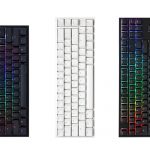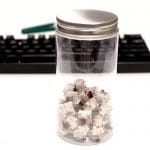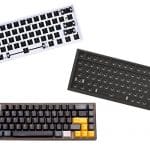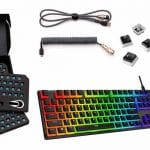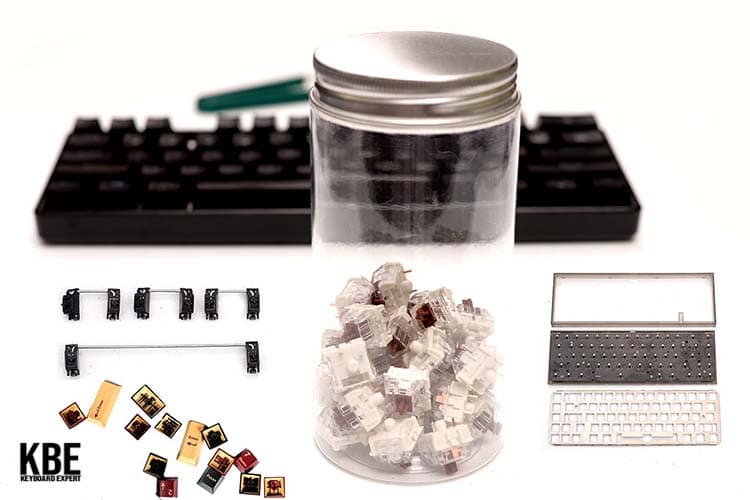
Regular keyboards work through the involvement of different parts that work together for data travel to take place. In essence, the mechanism behind mechanical and membrane keyboards allow for the “pumping of blood” to their respective PCBs, to which the latter (PCB) delivers it to the OS for display. Indeed, this begs the question: Why buy mechanical keyboards that are more expensive than regular or membrane ones?
Switches work as the multiple limbs of a mechanical keyboard. Taking it as a single component, we can see how its different parts, such as the stem, coil spring, housing, pins, work in every keystroke to allow for the travel and transmutation of computer language cognizable by the user.
A mechanical keyboard uses a mechanism called “actuation.” For this discussion, actuation is the process that allows the language assigned on the mechanical switch to be relayed and transmuted to language cognizable by the end-user. It starts from the exertion of force through a keypress and ends upon release and return of the mechanical switch in its original state. Take into account that this data travel happens in a blink of an eye, even if done rapidly.
The same, however, cannot be said for membrane keyboards. Mechanical keyboards have different features such as multiple key rollovers (n-key rollover), allowing simultaneous key presses to be correctly still detected. Whereas for membranes, it’s already rare to see one having this feature. At best, you can see gaming membrane keyboards have it but on specific keys only. In this article, we are going to succinctly discuss how mechanical keyboards work and how their added features allow them to provide a typing experience that is relatively better than membrane ones.
Parts of a Mechanical Switch
For us to know how mechanical keyboards basically work, we must be acquainted with the different parts of a mechanical switch that work together for actuation to occur. Mechanical switches are composed of several parts: the keycap; stem; housing; coil spring; and pin. The following are described as follows:
Keycap
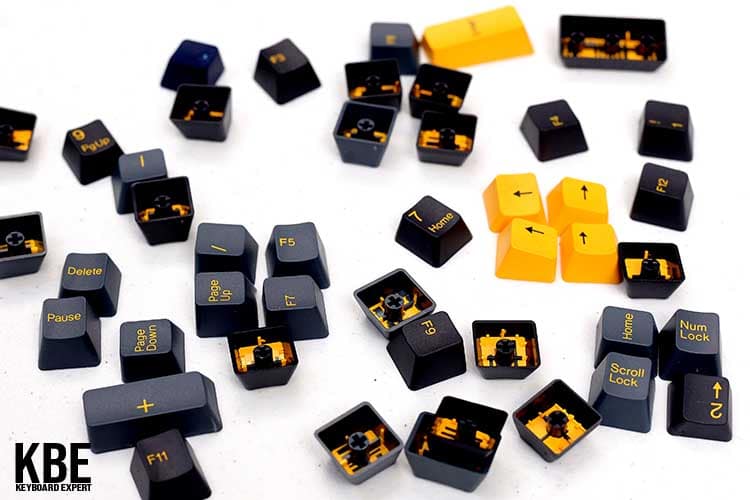
Keycaps are not a part of the mechanical switch per se. However, keycaps are vital to the mechanism behind it as it provides a guide for the end-user on the language they want to be displayed. It also contributes to the overall sound profile of the mechanical keyboard. In turn, this helps in defining the typing experience provided by the mechanical keyboard.
Stem
The stem found in a mechanical switch is the part that protrudes and is encased by the housing. It is where keycaps are lodged, and the spring is placed on its bottom. The shape of the stem varies depending on the travel time for the switch to actuate. Is a shorter travel time or travel distance better? Not necessarily.
A shorter travel distance means that it only needs a short distance for it to actuate. In effect, this results in significantly shorter travel time. Gamers usually prefer a shorter travel distance to eliminate any physical latency that may affect their gaming experience. As for typists and enthusiasts, it’s more of a personal preference to them.
Housing
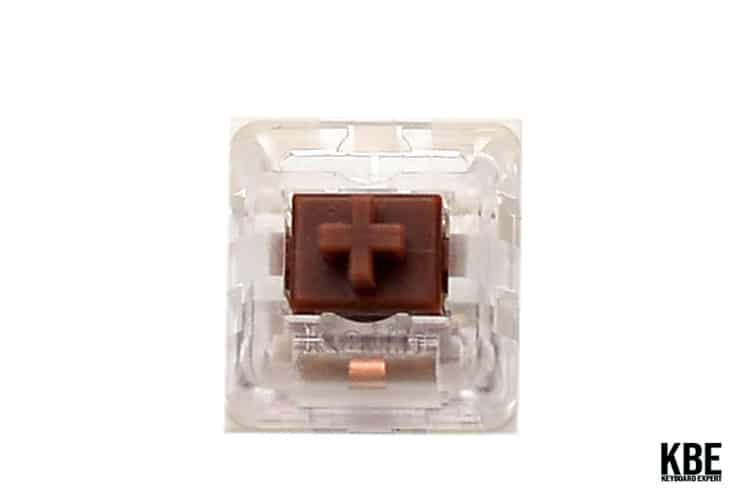
The housing of a mechanical switch is composed of the upper and base housing. Both similarly functions as an enclosure that protects the stem and the coil spring therein. They have their individual functions as well. The upper housing serves as a guide for the stem, while the base attaches the mechanical switch to the PCB through the pins.
Coil Spring

The coil spring, specifically its resistance, defines the minimum force needed for the switch to actuate (actuation force). Additionally, it serves as a guide for the stem to ensure that it returns to its original position after being actuated.
Pins
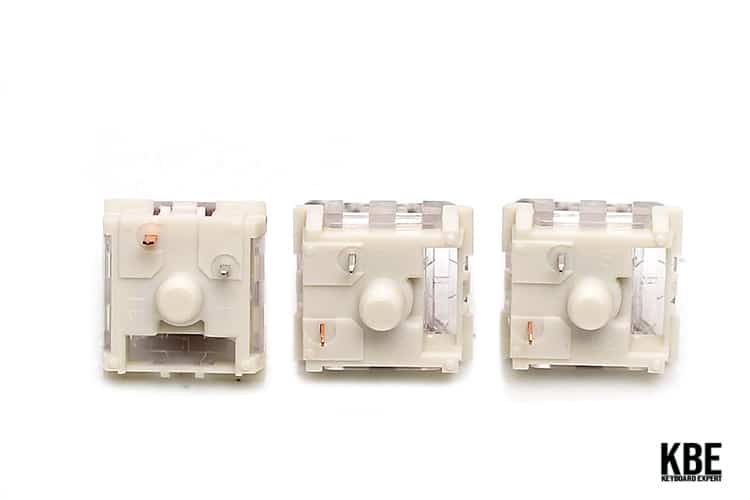
Pins are attached to the base housing and serve as the contact between the switch and the PCB. This part is where the key travel essentially ends. Take into account that the number of pins in a mechanical switch also determines whether it can be compatible with your keyboards’ PCB.
Switch manufacturers take all of these parts into consideration whenever they introduce their products to the market. From the actuation force, the type of stem and spring, even the housing itself, are pondered upon and packaged into a single switch,
Frankenswitches
Now might be a good time to discuss this enthusiast concept. A “frakenswitch” is a switch composed of parts from two or more switches. Not all of them are good. Some, however, such as the holy pandas, have made waves in the market. Is there merit to this kind of switch?
It depends. Enthusiasts go as far as tinkering their switches and doing a mix and match kind of thing, but at the end of the day, it will ultimately be up to their personal preference whether the custom switch they arrived at is good or better.
How Mechanical Keyboards work
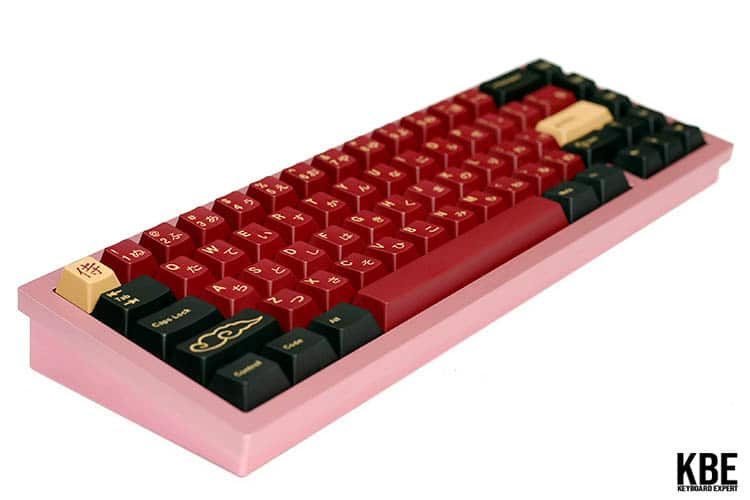
Having already discussed the different parts of a mechanical switch, we will now elaborate on our answer to this question.
A mechanical keyboard transmits computer signals to the operating system through actuating switches to provide for input desired by the user. For the sake of simplification, one must know that “E” on their keyboards is not just “E” in computer language.
Thus, whenever you press any character on your keyboard, it transmits a computer language assigned to the key to the operating system. Consequently, the operating system interprets and translates this into data that is intended and cognizable by the end-user. Upon undergoing this process, pressing “E” on your keyboard will now show “E” in your display.
As for mechanical keyboards themselves, it essentially starts with the exertion of force by the user. Upon exerting the minimum pressure required, the stem is pushed up to the point that it initiates data travel (referred herein as the travel distance) to the PCB through the pins and subsequently to the OS itself. After a keypress, the switch then through the spring returns to its original position, ready for the next keypress by the user.
Why Are Mechanical Keyboards Preferred?
Saying that mechanical keyboards are better than membrane or regular ones is erroneous if assessed in an objective sense. Time and again, it will ultimately depend on the users themselves whether they prefer the typing experience provided by a mechanical keyboard or the convenience and feel of a regular or membrane once.
Even so, we must not disregard that mechanical keyboards offer features that membranes do not or usually have. Some of these features are the following:
No Need To Bottom Out
This feature is one of the advantages of a mechanical keyboard. A mechanical switch already “actuates” even if it does not reach its full depth. Is it good or bad? Again, it depends. Some heavy typists tend to bottom out in their typing, while others have trained themselves to type without bottoming out their switches. This feature is, however, an advantage for gamers as it helps reduce or eliminate latency.
N-key Rollover

N-key rollover – N being the number of keys, refers to how many keys you can press simultaneously on your keyboard. These simultaneous keypresses are still within the capacity of your keyboard (assuming that it has this feature) to recognize. Mechanical keyboards have these convenient features to wit, it you can. Mechanical keyboards do have multiple key rollovers (higher-end ones having more than the average).
You can seldom find this feature on mechanical keyboards. At best, gaming membrane keyboards have more or less key rollovers only for certain keys but not for the whole keyboard itself.
Customization
Membrane keyboards cannot easily be customized. Changing the color of its case itself requires tedious disassembly, where any mistake may cause damage to its several parts. As for mechanical keyboards, simply saying that mechanical keyboards are customizable is an understatement.
If you are allowed to go further, you will inevitably build your own keyboard. In this regard, you are allowed to customize or choose parts that will compose your keyboard or even your switches, as we have shown in the discussion on Frankenswitches.
Summary
Mechanical keyboards work similarly with membrane or regular ones – the only difference is the existence of mechanical switches which individually cater to every key. The key factor that sets mechanical keyboards aside from regular keyboards is their features that significantly contribute to the typing experience it offers. This alone, however, is not conclusive.
As we always say, it will always redound to the personal preference of the user whether he or she finds mechanical keyboards better than membrane or regular ones.

The KBE team is dedicated to sharing our knowledge and creating useful resources about computer keyboards. This article was written as a team collaboration, combining our knowledge and years of experience using, building and modding keyboards. Meet the team here.
